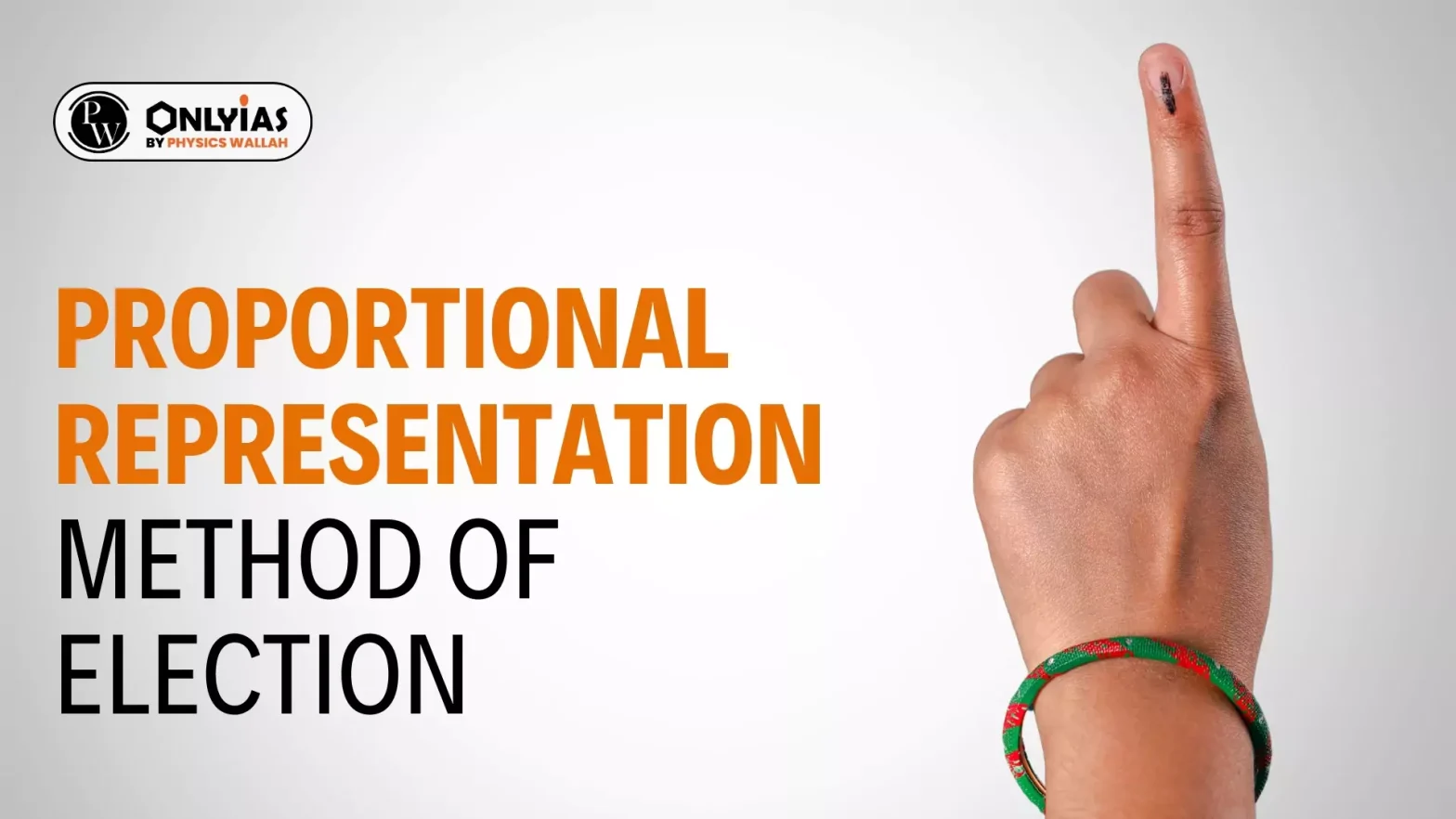This article sheds light on the proportional representation method of election and its possible impact on the recent 2024 Lok Sabha election results.
Analyzing Proportional Representation in 2024 Lok Sabha Election
The ruling National Democratic Alliance (NDA) won 293 seats with a 43.3% vote share.
- The Opposition bloc INDIA, including the Trinamool Congress, secured 234 seats with a 41.6% vote share.
- Other regional parties and independents got around 15% of the votes.
- Despite their vote share, these regional parties and independents only won 16 seats in total.
Enroll now for UPSC Online Course
What is Proportional Representation?
The Proportional Representation (PR) system ensures that all parties are represented based on their vote share. This method ensures fair representation for all political parties according to their vote share. The key feature of this system is that every vote impacts the outcome, not just those forming a majority or a plurality.
- Use of PR system in other countries
-
- Presidential Democracies: Countries like Brazil and Argentina use the party list PR system.
- Parliamentary Democracies: South Africa, the Netherlands, Belgium, and Spain also follow the party list PR system.
Main Types of Proportional Representation
- Party-list PR:
- Voters cast their votes for parties, not individual candidates.
- Parties receive seats in proportion to their vote share.
- If a party gets n% of the vote, it will win approximately n% of the seats.
- Every vote counts toward the final result, not just the majority or plurality.
- There is typically a minimum threshold (3-5% of the vote) for a party to gain any seats.
- Types of Lists:
- Closed Lists: Voters can only vote for parties, not individual candidates.
- Open Lists: Voters can express preferences for individual candidates and vote for independents.
- District Sizes:
- Can vary from small (e.g., three seats in Chile or Ireland) to large (e.g., a province or entire nation).
- Single Transferable Vote (STV):
- This system uses multi-member districts.
- Voters rank candidates in order of preference.
- Votes are transferred as candidates are elected or eliminated to ensure no vote is wasted.
- Benefits:
- Allows voters to choose candidates across party lines.
- Ensures that votes for independent candidates or less popular candidates are not wasted.
- Mixed Member Proportional Representation (MMP)
- Alternative Name: Also called the Additional Member System (AMS).
- MMPR combines FPTP and PR systems.
- Voters have two votes: one for a single-member district candidate and one for a party list.
- The party list vote determines the overall balance of seats for each party.
- How Does It Work?
- Each territorial constituency elects one candidate through FPTP.
- Additional seats are allocated based on the percentage of votes each party receives.
- This system aims to maintain stability while ensuring fair representation.
- Benefits for India
- The MMPR system could provide stability in India’s parliamentary democracy.
- It would ensure fair representation for all parties based on their vote share.
Check Out UPSC NCERT Textbooks From PW Store
Proportional RepreImplementing Sentation in India
- As a federal country, India should implement the PR system at the State/Union Territory (UT) level.
 If the PR system were applied to the 2024 election results at the State/UT level, the distribution of seats would be different (see Table 2 for details).
If the PR system were applied to the 2024 election results at the State/UT level, the distribution of seats would be different (see Table 2 for details).- Impact on Representation
- The PR system would align party representation with their vote share.
- Example 1: In Gujarat, Madhya Pradesh, and Chhattisgarh (66 seats total), the NDA won 64 seats with 62%, 60%, and 53% vote shares, respectively.
- Under PR, the INDIA bloc would have won 23 seats in these states.
- Example 2: In Odisha, the Biju Janata Dal (classified as ‘Others’) with a 42% vote share would have secured nine seats instead of none under FPTP.
- Example 3: In Tamil Nadu, the NDA and All India Anna Dravida Munnetra Kazhagam (classified as ‘Others’) would have won seats, as the INDIA bloc secured all 39 seats with just a 47% vote share under FPTP.
Criticisms of the Proportional Representation System
- Instability: PR might lead to instability, as no party or coalition may achieve a majority to form a government.
- Proliferation of Parties: It could encourage the formation of parties based on regional, caste, religious, and linguistic lines, potentially promoting casteist or communal voting patterns.
- This criticism is less valid since the current FPTP system also hasn’t prevented the formation of such parties.
- A minimum vote threshold can be set to qualify parties for seats, addressing this issue.
Enroll now for UPSC Online Classes
Comparison between FPTP and PR
| Criteria |
FPTP |
PR |
| Goal |
Elect a representative for each district |
Proportionally represent voters’ preferences |
| Method |
Candidate with most votes wins the district |
Seats allocated based on party’s overall vote share |
| Advantages |
Simple to understand. It works well for a large country like India and provides greater stability to the executive branch. |
Fairer representation of voters’ preferences |
| Disadvantages |
May not reflect overall popular vote |
May lead to coalition governments |
| Examples |
India, USA, UK |
Brazil, Argentina, Netherlands |
![]() 10 Jun 2024
10 Jun 2024

 If the PR system were applied to the 2024 election results at the State/UT level, the distribution of seats would be different (see Table 2 for details).
If the PR system were applied to the 2024 election results at the State/UT level, the distribution of seats would be different (see Table 2 for details).